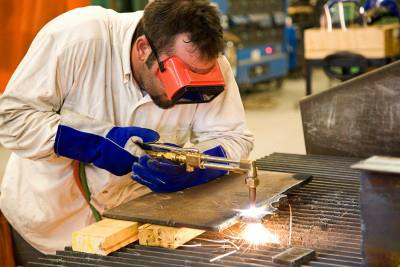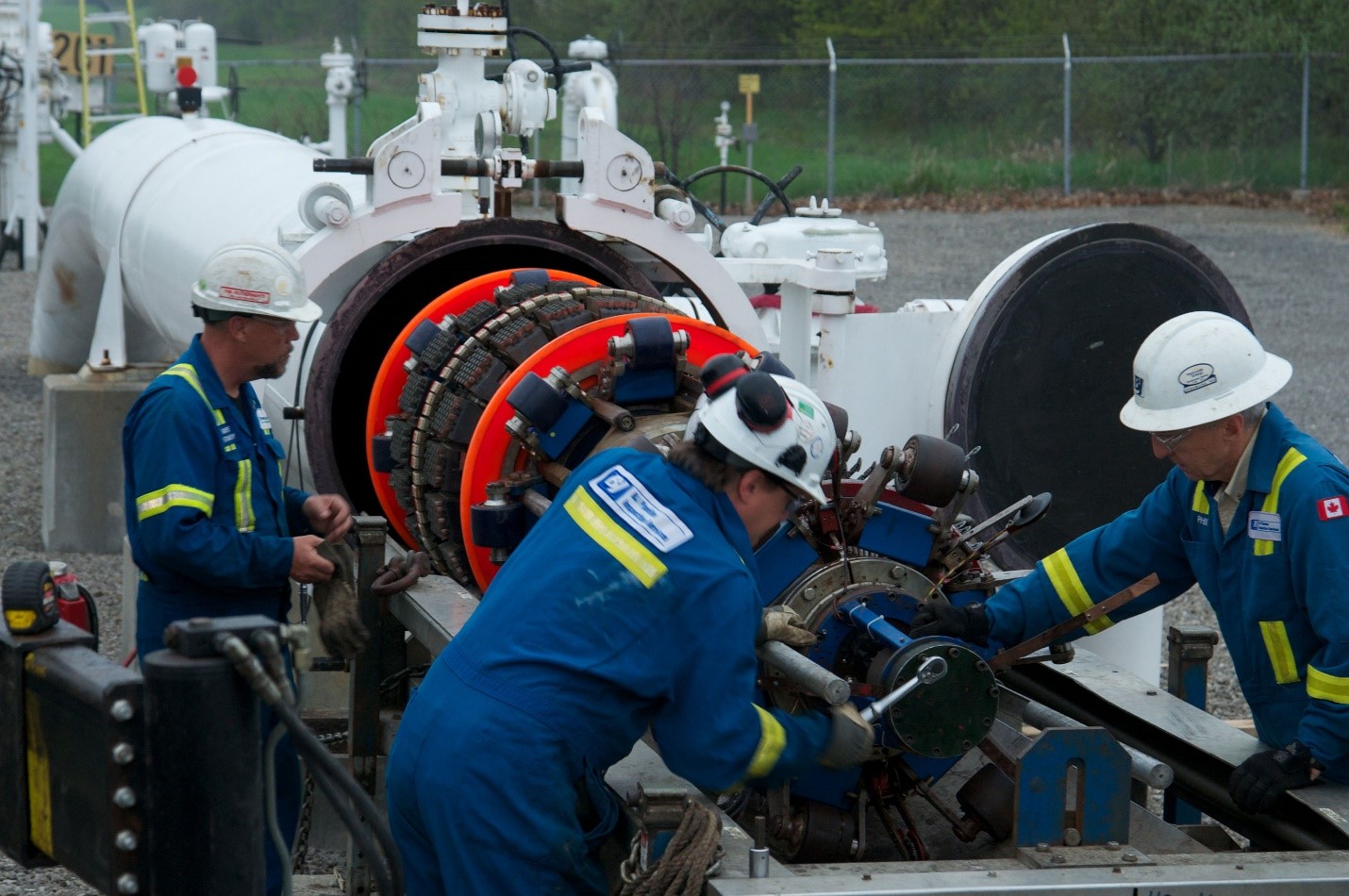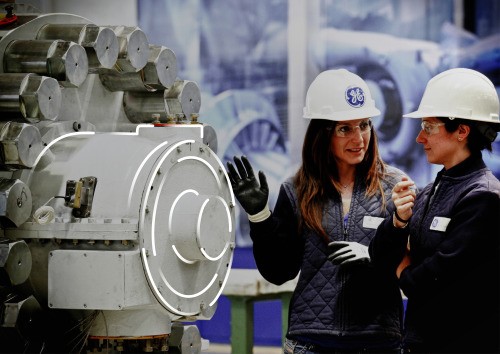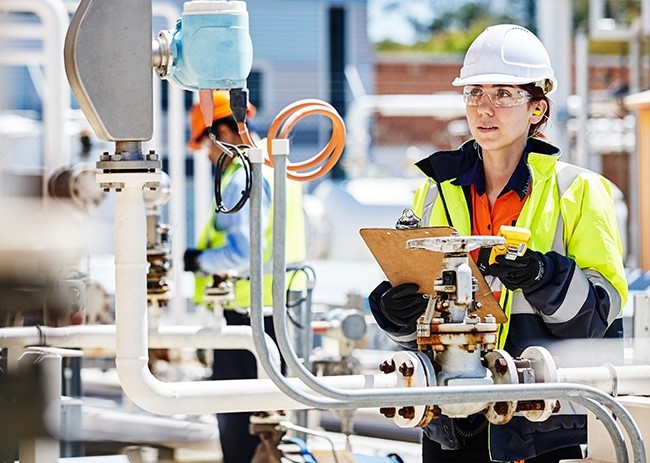COURSE OVERVIEW
FE0112 : Electric Arc Welding and Oxy-Acetylene Gas Cutting

OVERVIEW
| COURSE TITLE | : | FE0112 : Electric Arc Welding and Oxy-Acetylene Gas Cutting |
| COURSE DATE | : | Aug 10 - Aug 14 2025 |
| DURATION | : | 5 Days |
| INSTRUCTOR | : | Mr. George Poulos |
| VENUE | : | Dubai, UAE |
| COURSE FEE | : | $ 5500 |
| Request For Course Outline | ||
Course Description
This practical and highly-interactive course includes various practical sessions and exercises. Theory learnt will be applied using our state-of-the-art simulators.
This course is designed to provide participants with a detailed and up-to-date overview of Electric Arc Welding and Oxy-Acetylene Gas Cutting. It covers the applications of welding and cutting including the types of welding processes and the importance of oxy-acetylene gas cutting in industries; the personal protective equipment (PPE) for welding and cutting, fire hazards and fire extinguishers and safe handling and storage of gas cylinders; the various types of electric arc welding, equipment and tools used in electric arc welding and the role of electrodes and selection criteria; the working principle of oxy-acetylene gas cutting; and the difference between welding and cutting, components of the oxy-acetylene gas cutting system and gas properties.
Further, the course will also discuss how to assemble welding machine and cables, and setting-up oxy-acetylene torch and regulators, checking gas leaks and adjusting pressures for welding and cutting; the electric arc welding techniques, control heat input and travel speed; the common defects in welding and how to avoid them; the types of oxy-acetylene flames covering neutral flame, oxidize flame and carburize flame; cleaning and preparing surfaces for welding or cutting, removing rust, paint, and grease and marking and measuring workpieces; classifying electrodes, selecting the right electrode and storage and handling electrodes; and the effects of electrode angle on weld quality.
During this interactive course, participants will learn the gas cutting techniques and welding joint types; the effects of excessive heat on metal properties, managing heat input for different thicknesses and preheating and post-heating techniques; the advanced cutting methods and common welding and cutting defects, welding positions and challenges, and welding metal types; fixing weld cracks, improving bead uniformity and penetration, addressing undercut and overlapping issues and avoiding warp and distortion; the proper techniques for cutting thin and thick plates, adjusting torch settings for non-ferrous metals and managing slag in different materials; the visual inspection of welds, destructive and non-destructive testing methods, codes and standards for weld quality and documentation of weld inspection results; cleaning and maintaining welding machines, checking cables, electrodes, and clamps, and the preventative maintenance schedules; the welding procedures and documentation; the advanced gas cutting applications, specialized welding techniques, cost analysis of consumables and energy use; and reducing waste in welding and cutting processes
link to course overview PDF
This course is designed to provide participants with a detailed and up-to-date overview of Electric Arc Welding and Oxy-Acetylene Gas Cutting. It covers the applications of welding and cutting including the types of welding processes and the importance of oxy-acetylene gas cutting in industries; the personal protective equipment (PPE) for welding and cutting, fire hazards and fire extinguishers and safe handling and storage of gas cylinders; the various types of electric arc welding, equipment and tools used in electric arc welding and the role of electrodes and selection criteria; the working principle of oxy-acetylene gas cutting; and the difference between welding and cutting, components of the oxy-acetylene gas cutting system and gas properties.
Further, the course will also discuss how to assemble welding machine and cables, and setting-up oxy-acetylene torch and regulators, checking gas leaks and adjusting pressures for welding and cutting; the electric arc welding techniques, control heat input and travel speed; the common defects in welding and how to avoid them; the types of oxy-acetylene flames covering neutral flame, oxidize flame and carburize flame; cleaning and preparing surfaces for welding or cutting, removing rust, paint, and grease and marking and measuring workpieces; classifying electrodes, selecting the right electrode and storage and handling electrodes; and the effects of electrode angle on weld quality.
During this interactive course, participants will learn the gas cutting techniques and welding joint types; the effects of excessive heat on metal properties, managing heat input for different thicknesses and preheating and post-heating techniques; the advanced cutting methods and common welding and cutting defects, welding positions and challenges, and welding metal types; fixing weld cracks, improving bead uniformity and penetration, addressing undercut and overlapping issues and avoiding warp and distortion; the proper techniques for cutting thin and thick plates, adjusting torch settings for non-ferrous metals and managing slag in different materials; the visual inspection of welds, destructive and non-destructive testing methods, codes and standards for weld quality and documentation of weld inspection results; cleaning and maintaining welding machines, checking cables, electrodes, and clamps, and the preventative maintenance schedules; the welding procedures and documentation; the advanced gas cutting applications, specialized welding techniques, cost analysis of consumables and energy use; and reducing waste in welding and cutting processes
TRAINING METHODOLOGY
This interactive training course includes the following training methodologies:
LecturesPractical Workshops & Work Presentations
Hands-on Practical Exercises & Case Studies
Simulators (Hardware & Software) & Videos
In an unlikely event, the course instructor may modify the above training methodology for technical reasons.
VIRTUAL TRAINING (IF APPLICABLE)
If this course is delivered online as a Virtual Training, the following limitations will be applicable:
| Certificates | : | Only soft copy certificates will be issued |
| Training Materials | : | Only soft copy materials will be issued |
| Training Methodology | : | 80% theory, 20% practical |
| Training Program | : | 4 hours per day, from 09:30 to 13:30 |
RELATED COURSES

FE0160 : Pipeline and Piping Design, Installation, Operation, Inspection, Testing, Maintenance, Repair, FFS, Pigging, Integrity & Rehabilitation (ASME B31 & API 579 Standards)
- Date: Dec 21 - Dec 25 / 3 Days
- Location: Al Khobar, KSA
- Course Details Register

FE0920 : API 580: Risk Based Inspection (API Exam Preparation Training)
- Date: Dec 21 - Dec 25 / 3 Days
- Location: Doha, Qatar
- Course Details Register

FE0586 : ASME B31.8 Gas Transportation Piping Code
- Date: Dec 21 - Dec 25 / 3 Days
- Location: Dubai, UAE
- Course Details Register

FE0089 : API Codes (Rotary and Static Equipment)
- Date: Dec 21 - Dec 25 / 3 Days
- Location: Dubai, UAE
- Course Details Register
